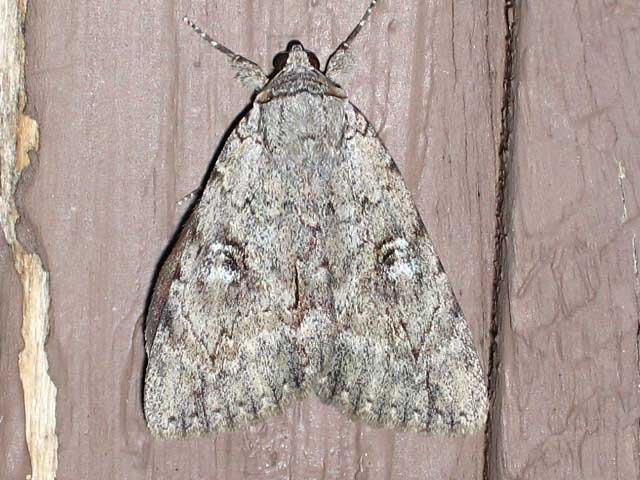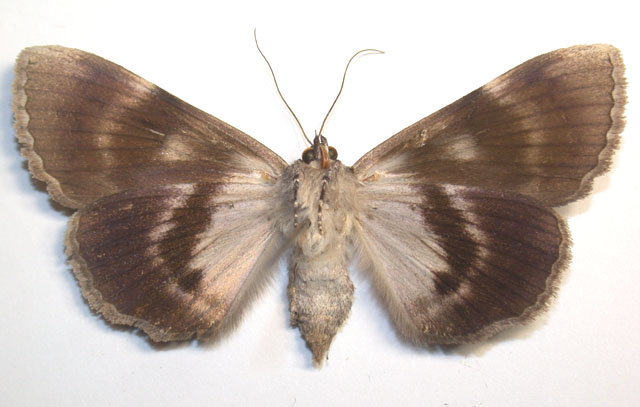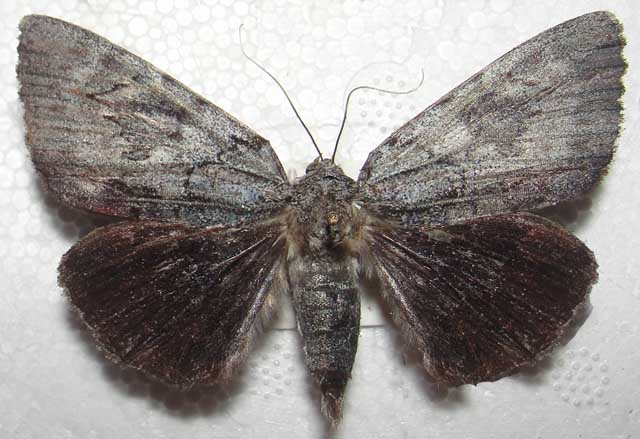Catocala judith
Catocala judith
kah-TOCK-uh-lahmJOO-dith
Strecker, 1873

Catocala judith pair, bait, Montreal, Quebec,
August 18, 1993, courtesy of Pierre Legault.
This site has been created by
Bill Oehlke at oehlkew@islandtelecom.com
Comments, suggestions and/or additional information are welcomed by Bill.
| TAXONOMY:
Superfamily: Noctuoidea
Family: Noctuidae
Group: Noctuinina
Subfamily: Catocalinae
Genus: Catocala, Schrank, 1802
| |
MIDI MUSIC
"Moon River"
copyright C. Odenkirk
MIDI CITYON.OFF
<bgsound src="moon.mid" LOOP=FOREVER>
|
DISTRIBUTION:
Catocala judith, Judiths's
Underwing, (wingspan: 45-55mm; Hodges #8781), flies in Canada in
southern Quebec (very rare) and
Ontario
and in the United States from New Hampshire
south through Connecticut
and New Jersey to North Carolina
and Georgia, west to Oklahoma and
Iowa and north to Wisconsin.
Catocala judith is also reported in
Arkansas,
Illinois,
Indiana,
Kansas,
Kentucky,
Louisiana,
Maryland,
Massachusetts,
Michigan,
Minnesota,
Mississippi,
Missouri,
New York,
Ohio,
Pennsylvania,
Rhode Island,
South Carolina,
Tennessee,
Vermont,
Virginia and
West Virginia.
I suspect it is also present in Delaware and
District of Columbia, but I have no confirmed reports.

Catocala judith, Stillwater Township, Sussex County,
New Jersey,
August 1, 2005, courtesy of Joe Garris.

Catocala judith, Stillwater Township, Sussex County,
New Jersey,
August 1, 2005, courtesy of Joe Garris.
This is one of the smaller "black" underwings. The forewing is a uniform light grey
with thin and only slightly darkened antemedial, median and postmedial lines.
There are no darkened dashes (slight anal dash) or transverse lines.
The reniform area is slightly darkened while the area just before the subterminal line is
a bit lighter.
Catocala judith Canadian Biodiversity Information Facility
|

|
The hindwing fringe is almost the same color as the wing with no white.
Miranda has a white area on hindwing apex, slighly less
prominent than that of andromedae. Andromedae also has
a darker shaded area along the inner margin of the forewing,
distinguishing it from judith.
Judith seems to be a late flier, waiting until 1:00am before
visiting lights.

Catocala judith female underside, bait, Longueuil, Quebec,
August 12, 1992, courtesy of Pierre Legault.
FLIGHT TIMES AND PREFERRED FOOD PLANTS:
Catocala judith are on the wing from July to early October. Peak
flight is probably in August-September in the northern portions of
range.
The Catocala judith caterpillar feeds on Juglans and
Carya species: pecan and hickories.
ECLOSION:
Adults eclose from pupae at soil surface.
SCENTING AND MATING:
Catocala judith females
emit an airbourne pheromone and males use their antennae to track the
scent plume.
EGGS, CATERPILLARS, COCOONS, AND PUPAE:
Eggs are deposited on
tree bark in the fall and hatch the following spring.
Larval Food Plants
Listed below are primary food plant(s) and alternate food plants.
It is hoped that this alphabetical listing followed by the common
name of the foodplant will prove useful. The list is not exhaustive,
although some species seem very host specific.
Experimenting with closely related foodplants is worthwhile.
Carya illinoinensis.......
Carya ovata
juglans nigra
|
Pecan
Shagbark hickory
Black walnut
|

Catocala judith, on my home computer only.

Catocala judith, Willshire, Van Wert County, Ohio,
July 12, 2012, courtesy of Greg Roehm, id by Bill Oehlke.
This page is brought to you by Bill Oehlke and the
WLSS. Pages are on space rented from Bizland. If you would like to become a "Patron of the Sphingidae/Catocala Sites",
contact Bill.
Please send sightings/images to Bill. I will do my best to respond to requests for identification help.
Enjoy one of nature's wonderments: Live Saturniidae (Giant Silkmoth) cocoons.

|

To show appreciation for this site, click on the flashing
butterfly to the left, a link
to many worldwide insect sites. |
Return to Canadian Index
Return to Main Index








